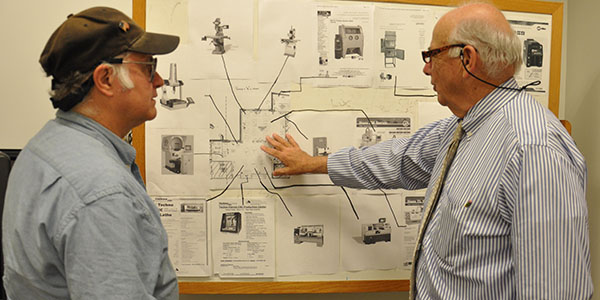
To match the growing manufacturing sector, Housatonic Community College has unveiled a new manufacturing program to train students in the growing job market.
“Manufacturing in the area and the nation is leading economic growth,” William Griffin, HCC”™s academic coordinator, said in a press release. “Through the application of state-of-the-art technology, manufacturers are more competitive and they need to hire more workers with advanced manufacturing skills.”
The Bridgeport-based program is one of three in the state recently launched as a part of Gov. Dannel P. Malloy”™s jobs bill last year.
Roughly $18 million was allocated to fund the programs in Bridgeport, Naugatuck Valley Community College in Waterbury and Quinebaug Valley Community College in Danielson.
Enhancing the labor pool”™s skills is vital for the state”™s economic competitiveness and recovering from the recession, Malloy has said. His administration has passed a number of initiatives to increase higher education enrollment as well as a competitive update for technical high schools.
“Turning the corner on decades of economic decline means we have to prepare our students for a successful future in the high-tech workforce,” Malloy said. “We have to create the skilled labor that Connecticut companies need to compete globally.”
Manufacturing used to employ half of all Connecticut workers in the 1950s, but today it accounts for just 10 percent, according to the state General Assembly. But that number is rising.
More than 168,000 people work in the manufacturing sector in Connecticut and there are currently 750 job openings in Bridgeport alone. Last year the field contributed more than $25 billion to the gross state product, according to HCC.
The first set of classes will start in the fall and will offer students two certificate tracks: basic and advanced. Both allow for financial aid eligibility.
Enrolled to start classes in the fall, 65-year-old Harry Nomack said he thought the program would be a good opportunity to start fresh. He didn”™t finish school when he was younger and recently he”™s been struggling to make a living wage as a part-time employee at Walmart.
“I just want to get back into the swing of things,” Nomack said. “This will give me something to do and pride, too. It”™s making something with your hands.”
Students will split their time between classroom activities and hands-on projects in the manufacturing lab. Participants will also be able to learn about theory and possibly have on-site manufacturing internships or apprenticeships. An evolving field, the courses have a high emphasis on technology and computer programming.
Nomack said he”™s seen a lot of job openings in manufacturing. Both young and old generations could benefit from the yearlong program, he said, especially aging machine operators whose careers could take off by learning more computer skills.
“Manufacturers are just going to be there waiting for you,” he said. “It”™s not like you went to school and got the book learning, you actually know how to use the machines.”
Machine operator, programmer, assembler and inspector positions are paid between $15 and $20 an hour, according to HCC.



















Comments 1